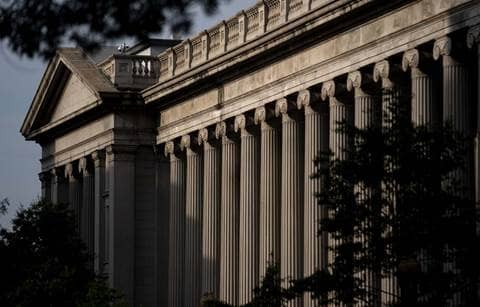There’s a lot going on in the world of cost segregation these days. The phaseout of 100% bonus depreciation after 2022 makes the accurate classification of shorter-lived assets even more valuable. At the same time, the IRS’ release of an updated Cost Segregation Audit Technique Guide provides taxpayers who want to use this strategy with an even clearer picture of the process they need to follow in order to perform a study that will qualify under the rules. In short, businesses that could potentially benefit from a cost segregation study have an additional incentive to analyze qualifying properties as soon as possible, and they have additional clarity from the IRS on how to document and support the determinations that they make regarding asset classifications.
An introduction to cost segregation and bonus depreciation
Cost segregation is a specialized type of fixed asset review that’s performed on newly constructed, recently purchased, or significantly renovated buildings. In the absence of a cost segregation study, all nonland costs associated with the building would be lumped into the asset classification of “real estate” and depreciated over 27.5 or 39 years. A quality cost segregation study examines the component costs of the building to determine what assets may have shorter depreciable lives under federal tax rules. Items like carpeting, wallpaper, furnishings, and cabinetry can qualify for faster cost recovery under the rules and generate larger depreciation deductions in the early years of a new building’s lifespan. Components like HVAC and specialized wiring may also qualify for shorter depreciation when they’re installed in manufacturing facilities.
Current bonus depreciation rules heighten the value of accelerated deductions because they permit 100% deductions in the year an asset is placed in service if that asset has a depreciable life of 20 years or less. (In short, property with a useful life less than 20 years can be fully deducted in the year placed in service.) Starting in 2023, that percentage is scheduled to drop 20 percentage points each year until bonus depreciation sunsets completely starting in 2027. Asset balances remaining after bonus depreciation is applied are depreciated starting in the year placed in service under the applicable federal lifespan of 3, 5, 7, 10, or 20 years depending on the type of property.
Updated Cost Segregation Audit Guide details the IRS’ expectations
To meet the IRS’ expectations, a taxpayer needs to submit a “quality cost segregation report” supported by a “quality cost segregation study.” The audit guide lists several types of common approaches for cost segregation studies, including:
- Detailed engineering from actual records — This method uses cost information from contemporaneous construction and accounting records and is described by the IRS as "the most methodical and accurate approach, relying on solid documentation of the construction costs and minimal estimating."
- Detailed engineering cost estimate approach — This method is similar to engineering from actual records, but it uses cost estimates instead of actual costs. It’s used in situations where actual costs may not be available, such as the purchase of a used property.
- Survey or letter approach — An alternative method for estimating costs on a newly constructed property, this process involves contacting contractors and subcontractors to ask for specific information on cost of assets they installed on the project.
- Residual estimation approach — A process in which the costs of short-lived assets (five to seven-year depreciable lives) are added together and subtracted from the total project cost. It can be simpler and quicker but can also be less accurate and harder to document.
- Sampling or modeling approach — This method relies on a model to analyze multiple properties that are nearly identical in construction, appearance, and use, like fast-food franchise locations. Sample results are subject to challenge by the IRS over their statistical validity.
- Rule of thumb — Some studies use little or no documentation but rely on a preparer’s experience in a certain industry. The lack of documentation in a study like this makes it particularly susceptible to IRS challenge.
The IRS doesn’t prescribe a specific methodology or take an official position on the validity of any one type of study over another. However, rulings on the issue point to the value of having a study performed by “qualified individuals” and “professional firms” that are competent in design, construction, auditing, and estimating procedures related to building construction. The audit guide stresses the importance of substantiation for the depreciation deductions and asset classifications claimed by the taxpayer and notes that substantiation using actual costs is considered more accurate than estimates. When estimates are the only option, the documentation that supports the methodology and source data used to calculate the estimates will be critical to the overall effectiveness of the report.
Components of a “quality cost segregation study” and a “quality cost segregation report”
While it doesn’t take an official position on which approach is acceptable, the IRS does spell out what any cost segregation study must contain in order to meet its requirements as a “quality cost segregation study.” The components of a quality study include:
- Preparation by individuals with experience in both construction processes and tax laws related to depreciation. The study should identify the preparers and reference their credentials, experience, and expertise in cost segregation.
- A description of the methodology used and the steps taken to classify assets and determine costs.
- Use of the best possible documentation, including site visits and construction documents.
- Interviews with appropriate parties.
- Use of a common nomenclature (consistent with blueprints and other construction documents) and standard numbering system (consistent with contract bid documents and pay requests).
- Explanation of legal analysis to support property classifications.
- Determination of unit costs and engineering “take-offs.”
- An organized list of assets that ties to the fixed asset ledger, including a specific listing of tangible personal property identified as a result of the study.
- Reconciliation of allocated costs to actual costs and an explanation of treatment of indirect costs.
- Consideration of any related issues, including changes in accounting methods and sampling techniques.
Once these elements of a quality study are completed, they should be presented to the IRS in a “quality cost segregation report” that includes:
- An executive summary that identifies the preparer, the date of the study, the taxpayer, and the property units classified as land, land improvements, building, or personal property.
- A narrative report that discusses the theory, definitions, and rationale behind the study.
- A schedule of the assets that are the focus of the study.
- A schedule of direct and indirect costs.
- A schedule of property units and costs.
- A description of engineering procedures and methodology for determining the cost of each unit.
- A statement of any assumptions and limiting conditions applicable to the report.
- Certification that the person who signed the report developed the analysis, opinions, and conclusions therein.
- Relevant exhibits such as “client cost sources” and “client source reconciliation.”
There’s no better time to initiate a new cost segregation study or review an existing one
Businesses that have placed real estate into service in the last couple of years without performing a cost segregation study should contact their tax advisors to learn more about whether a quality study could result in significant acceleration of depreciation deductions. Those that have submitted tax returns based on studies in recent years may want to seek review of the results in light of the recent updates to the IRS Cost Segregation Audit Technique Guide. Given the federal budget focus on IRS hiring in the years ahead, it’s reasonable to expect that some of those new employees will be tasked with applying the rules in the guide to recent cost segregation claims.





